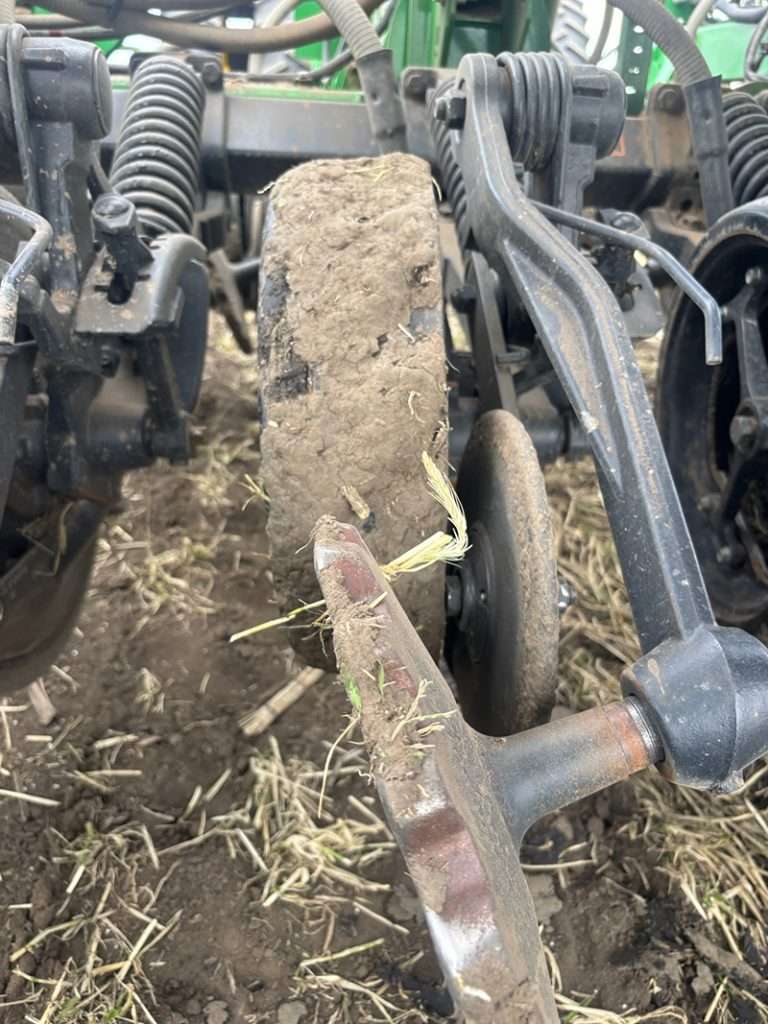by Ethan Begle
As I write this, a few states are still experiencing wet conditions heading into June. If you’re like me, you waited patiently through the cool temps in April in hopes May would bring some heat and drier conditions. Only to find the same wet soil as in April, but warmer temperatures. While the warmer soil helped with even emergence, it’s more understandable why having a planter big enough to get everything done in 10-14 days would be desirable in today’s climate. Deciding whether to plant varies with field conditions. No-till soils that have excellent residue cover can be planted sooner because of the residue barrier against the wet soil underneath. When the crop insurance coverage dates start, it seems more prudent to see if the equipment is leaving tracks to determine whether to plant a field. The future forecast after the seed is planted is most critical. If you planted the seed correctly, you should not want rain after planting.
The term most often associated with concerns about planting in wet conditions is sidewall compaction. I would argue that this is more of an issue in tilled fields where soil structure has been altered, and it is easier to compact a loose clod of dirt. Tillage is compaction, so when you’re deciding whether to work in a wet field to dry it out, remember that compaction is not just squishing the soil from equipment. Anything that alters soil structure and breaks up soil colloids creates more compaction. Sidewall compaction must happen in dry soils to hold the furrow together, but when it’s wet, it takes less gauge wheel pressure to keep the furrow together. Exapta currently has two options, a narrow three-inch wide gauge wheel and the standard four-and-a-half-inch wide wheel. More farms are moving to narrower gauge wheels as they run over less residue, which mostly equals longer life and more accurate depth. There have been questions about whether narrower wheels increase sidewall compaction, and from evaluations in the field, this can be overemphasized. Because gauge wheels carry the load to the outside of the tire, the highest compaction occurs three to four inches to the side of the furrow. All tires have some form of void around the lip of the tire to allow for soil displacement when the blade exits the soil. This void allows for slight lifting of the sidewall, which is a detriment when it comes to furrow integrity and placing the seed at the desired depth. A gap between the gauge wheels and blades lets soil fall in the furrow causing erratic depth. This can be overcome with higher downforce on the row unit. This has the benefit of not only holding the furrow together but also more downforce smooths out the row unit ride. When digging for seed and checking seed depth, it’s also important to poke the sidewall to make sure it’s loose. This is where Thompson spiked closing wheels come in to ensure that the necessary compaction created by the blades and gauge wheel pressure is eliminated. Tillage should come after the seed is planted with your closing system. This loosens the soil above the seed and encourages oxygen exchange, which is needed when soils are fully saturated.
When nature doesn’t cooperate, you can’t always wait for better conditions. You can successfully plant in moist soil and not pay for it later in the year. It starts with avoiding the mud with the row unit, raising the row cleaners, and keeping residue or growing cover crops on the surface. The only disturbance should be the two-inch strip made by the disc openers, and make sure the equipment will carry over the field and not leave deep tracks. Wet springs are when building soil structure pays off the most. Lastly, be aware that forecasts constantly change, and the seedlings will need a few weeks of wet soil to emerge and get roots to explore the surrounding soil. This is a good reason for early April planting, as chances of getting a rain shower are greater from then until June. In late May if it’s wet, the pattern will usually turn dry. A growing focus on farms is on in-season stress reduction products that can protect yield when you know planting conditions weren’t ideal. It takes moisture to germinate a seed, so learning to deal with wet conditions and then not giving up on the crop during the growing season will improve your overall farm average.

